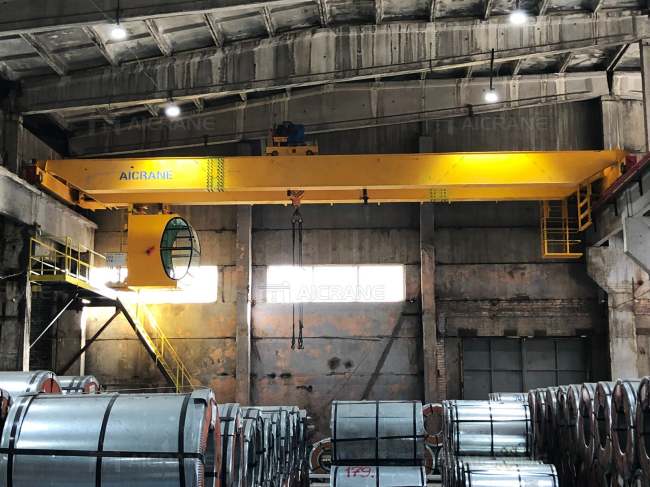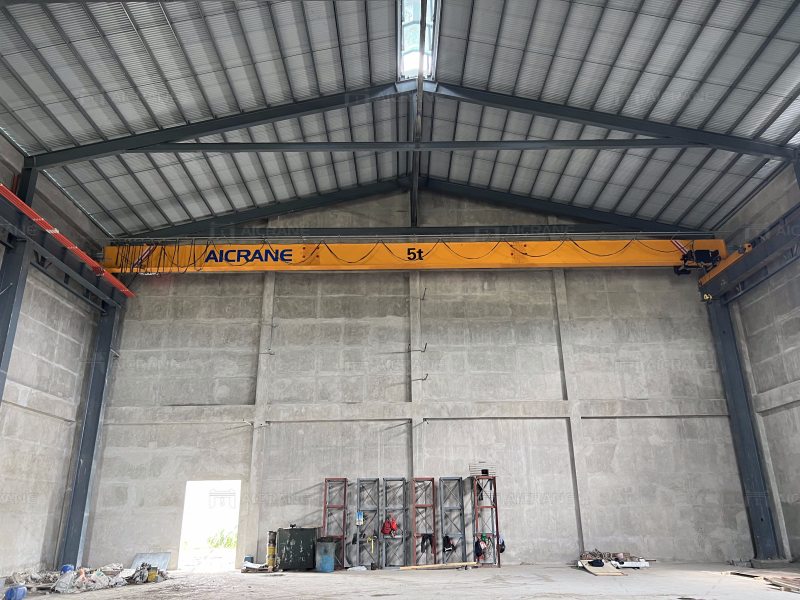In the rapidly evolving world of industrial automation and material handling, precision and control are paramount. Modern Electric Overhead Traveling (EOT) cranes embody these principles through advanced features that enhance efficiency, safety, and adaptability. This article explores the cutting-edge technologies and innovations integrated into today’s EOT cranes, highlighting how these features contribute to superior performance and operational excellence.
The Evolution of EOT Cranes
EOT cranes have been a cornerstone of industrial operations for decades, providing robust solutions for lifting and moving heavy loads across various sectors. The fundamental design of EOT cranes has remained consistent, comprising a bridge, hoist, trolley, and control systems. However, advancements in technology have significantly enhanced their capabilities, making them more precise, reliable, and user-friendly.

Key Advanced Features of Modern EOT Cranes
Advanced Hoisting Mechanisms
Modern EOT cranes feature sophisticated hoisting mechanisms designed to deliver precise and controlled lifting operations. Two primary types of hoists are commonly used:
- Wire Rope Hoists: Known for their strength and durability, wire rope hoists are capable of lifting heavier loads with high precision. They are designed to handle demanding industrial applications, providing smooth and controlled lifting and lowering movements.
- Chain Hoists: Typically used for lighter loads, chain hoists offer simplicity and ease of maintenance. They provide reliable performance and are ideal for applications where precision and control are essential.
Variable Frequency Drives (VFDs)
Variable Frequency Drives are a crucial component of modern EOT cranes, offering precise control over the crane’s speed and acceleration. VFDs adjust the motor speed to match the required operational parameters, enabling smooth starts, stops, and variable speed control. This results in:
- Enhanced Precision: Operators can control the crane’s movements with greater accuracy, minimizing the risk of errors and improving load handling efficiency.
- Energy Efficiency: By optimizing motor speed, VFDs reduce energy consumption, leading to lower operational costs and a smaller environmental footprint.
- Reduced Wear and Tear: Smooth acceleration and deceleration reduce mechanical stress on the crane components, extending the equipment’s lifespan.
Programmable Logic Controllers (PLCs)
PLCs are integral to the automation and control of modern EOT cranes. These digital controllers manage and monitor overhead crane functions, ensuring precise and reliable operations. Key benefits of PLC integration include:
- Automated Operations: PLCs can automate repetitive tasks, reducing the need for manual intervention and increasing operational efficiency.
- Enhanced Safety: PLCs can be programmed to include safety interlocks and emergency stop functions, ensuring safe crane operation.
- Data Logging and Analysis: PLCs can record operational data, allowing for performance analysis and predictive maintenance. This helps in identifying potential issues before they lead to downtime.
Radio Remote Controls
Radio remote controls provide operators with the flexibility to control the crane from a safe distance. This technology enhances both safety and convenience, offering:
- Improved Operator Safety: By allowing operators to stay clear of hazardous areas, remote controls reduce the risk of accidents and injuries.
- Enhanced Visibility: Operators can choose vantage points that offer the best visibility of the load and surroundings, improving precision and control.
- Increased Flexibility: Remote controls enable operators to move freely around the workspace, facilitating more efficient and effective crane operations.

Anti-Sway Technology
Anti-sway technology is a significant advancement in modern EOT cranes, designed to minimize the swaying of loads during lifting and movement. This technology uses sensors and control algorithms to stabilize the load, resulting in:
- Improved Load Control: Reduced sway ensures that loads are transported smoothly and accurately, minimizing the risk of collisions and damage.
- Enhanced Safety: Stable loads are less likely to cause accidents or injuries, improving overall workplace safety.
- Increased Productivity: Operators can move loads more quickly and efficiently without waiting for the load to stabilize, boosting operational productivity.
Load Monitoring Systems
Load monitoring systems provide real-time data on the weight and distribution of the load being lifted. These systems offer several benefits:
- Prevent Overloading: By monitoring the load weight, these systems prevent the crane from lifting loads beyond its capacity, reducing the risk of mechanical failure and accidents.
- Optimized Load Handling: Accurate load data allows operators to handle loads more efficiently, improving overall productivity.
- Data Recording: Load monitoring systems can log data for analysis, helping to identify patterns and optimize crane usage.
Integration with IoT and Industry 4.0
The integration of Internet of Things (IoT) technology and Industry 4.0 principles has revolutionized the functionality of EOT cranes. Smart cranes equipped with IoT sensors and connectivity features offer:
- Real-Time Monitoring: IoT sensors provide real-time data on crane performance, including load weight, operating conditions, and maintenance needs. This enables proactive maintenance and reduces downtime.
- Remote Diagnostics: Technicians can remotely diagnose and troubleshoot issues, minimizing the need for on-site visits and speeding up repairs.
- Enhanced Efficiency: Smart cranes can optimize their operations based on data analytics, improving efficiency and reducing energy consumption.
If you are interested in knowing more about different types of cranes and would like to select a suitable one for your business, you can check Aicrane lifting solutions for reference, and you will get helpful information and suggestions about eot cranes.
Benefits of Advanced EOT Crane Features
The advanced features of modern EOT cranes translate into several tangible benefits for industrial operations:
- Increased Precision and Control: Enhanced control systems and hoisting mechanisms allow for precise and accurate load handling, reducing errors and improving operational efficiency.
- Enhanced Safety: Safety features such as anti-sway technology, load monitoring systems, and remote controls protect operators and minimize the risk of accidents.
- Improved Productivity: Advanced technologies enable faster and more efficient crane operations, increasing throughput and reducing operational bottlenecks.
- Lower Operational Costs: Energy-efficient components and optimized performance reduce energy consumption and maintenance costs, providing long-term cost savings.
- Greater Flexibility: Customizable features and remote control options offer flexibility in crane operation, allowing businesses to adapt to changing needs and environments.
Modern EOT cranes represent the pinnacle of precision and control in material handling. With advanced features such as variable frequency drives, programmable logic controllers, radio remote controls, anti-sway technology, load monitoring systems, and IoT integration, these cranes deliver unparalleled performance, safety, and efficiency. By investing in advanced EOT cranes, businesses can optimize their operations, enhance workplace safety, and achieve greater productivity. As technology continues to evolve, the capabilities of EOT cranes will only expand, further solidifying their role as indispensable tools in the industrial landscape.